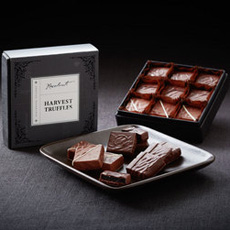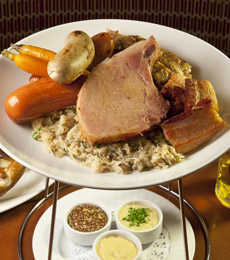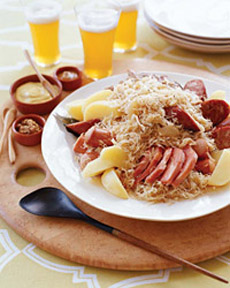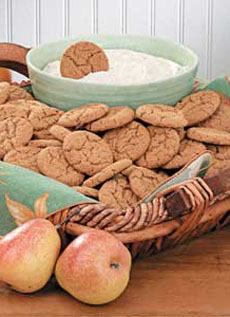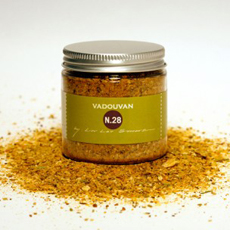
This simple blend, from IngredientFinder.com,
contains only four ingredients: cumin, garlic,
fenugreek and onion. |
|
We must admit, this was a new one for us. We received a recipe for deviled eggs for our consideration. One of the ingredients: vadouvan.
Vadou-what? We had to look it up.
Vadouvan, also called French curry, is a French interpretation of an Indian masala that mixes cardamom, coriander, cumin, curry, curry leaves, fenugreek, garlic, marash chiles, mustard seeds and roasted onion, among other ingredients. Its flavor is more familiar to Western palates than many Indian spice mixtures.
A key difference is in dried onions or shallots. The spice is thought to have originated due to French colonial influence in the Puducherry region of India. [Source: Wikipedia]
Use it in place of curry powder on fish, lamb, chicken, pork, sauces, stews, soups and vegetables. It’s a delicious pairing with dairy, potatoes, starchy grains and anything grilled.
Give a tin or jar as a holiday gift to your favorite cooks. There’s an attractive tin for $8.32 on Amazon, with free shipping on orders over $35. (Tins are preferable to jars, since light is one of the factors that reduces the potency of the spice, along with proximity to heat and moisture.)
|
|
|
|
MASALA VS. GARAM MASALA: THE DIFFERENCE
Masala or massala is a South Asian term for a spice mix or a seasoning of any sort. It is used extensively in the cuisines of Bangladesh, Burma, India, Nepal, Pakistan and Sri Lanka.
The word is of Arabic origin (maslahah), originally meaning “a thing which is good and right.”
Masala refers to any fragrant spice blend. It can be wet (a paste) or dry (a blend of dried—and usually dry-roasted—often toasted and ground spices). The pastes frequently include fresh ingredients like chiles, cilantro, garlic, ginger, mint, onion and tomato, along with dried spices and oil. Dishes made with such pastes sometimes have “masala” in their names, such as Chicken Tikka Masala and Vindaloo Masala.
Garam masala refers to dry spice blends. There are many variations, from region to region and cook to cook (examples: Tandoori masala, chatt masala and even panch phoron, the Bengali five-spice blend). Popular ingredients include bay leaf, cardamom, cinnamon, clove, coriander, cumin, nigella and nutmeg/mace and pepper.
|
|
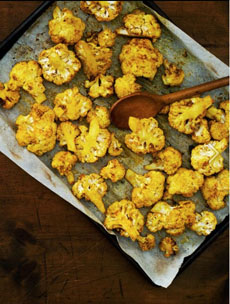
Masala cauliflower. Photo courtesy The Paper Chef.
|
THE HISTORY OF VADOUVAN
Vadouvan is a fusion food—or rather, spice. It was created following the French colonization of Pondicherry*, the capital city of the Indian union territory of Puducherry, in southeast India.
The French took a liking to the Indian spices they encountered and brought them back home. What began as a curry blend made its way into French cuisine as a fusion blend that became known as vadouvan (VAH-doo-von).
The fusion typically includes Indian spices such as curry, coriander, turmeric and cumin; along with French favorites shallots and garlic. It became known as “French curry powder.”
Other French seasonings can be added, from fenugreek and mustard seeds to red peppers and onions.
Vadouvan was used in traditional curry applications—meat, poultry, seafood, vegetables. As it has grown in awareness, the spice blend is now used to season everything from olives tossed to fried chicken.
Ready to spice things up?
________________
*The French East India Company established Pondicherry as their headquarters in 1674. Pondicherry has changed hands frequently over the centuries, in battles between Britain and France. France finally turned governance over to the Indian Union took place in 1954.
|
|


